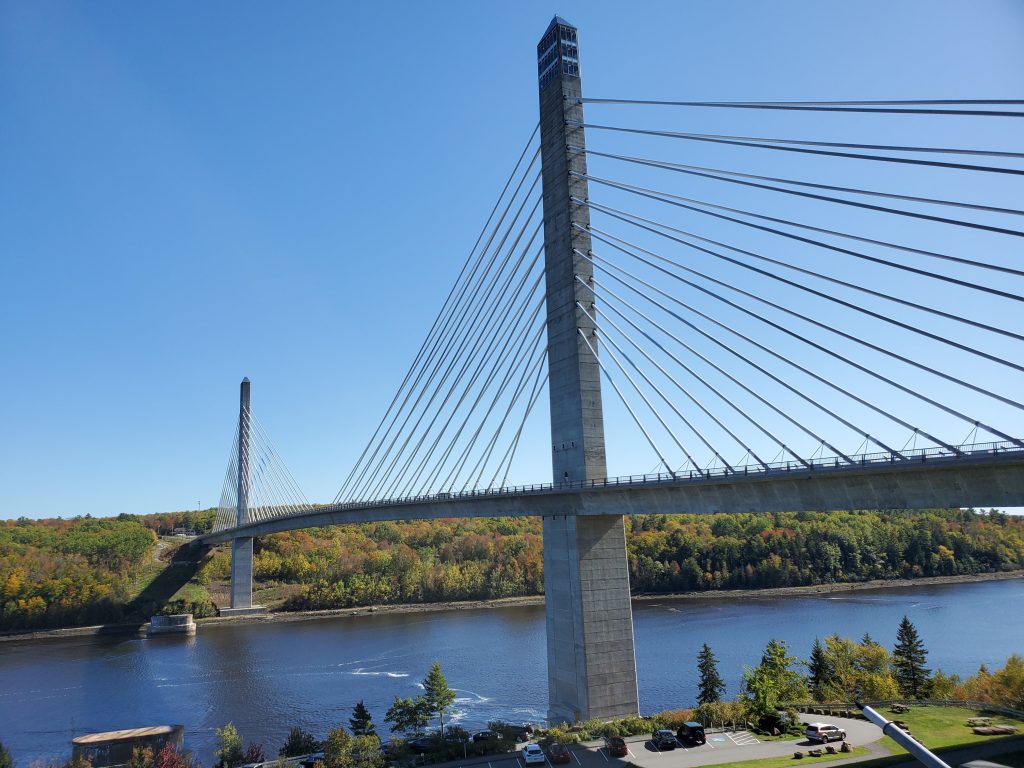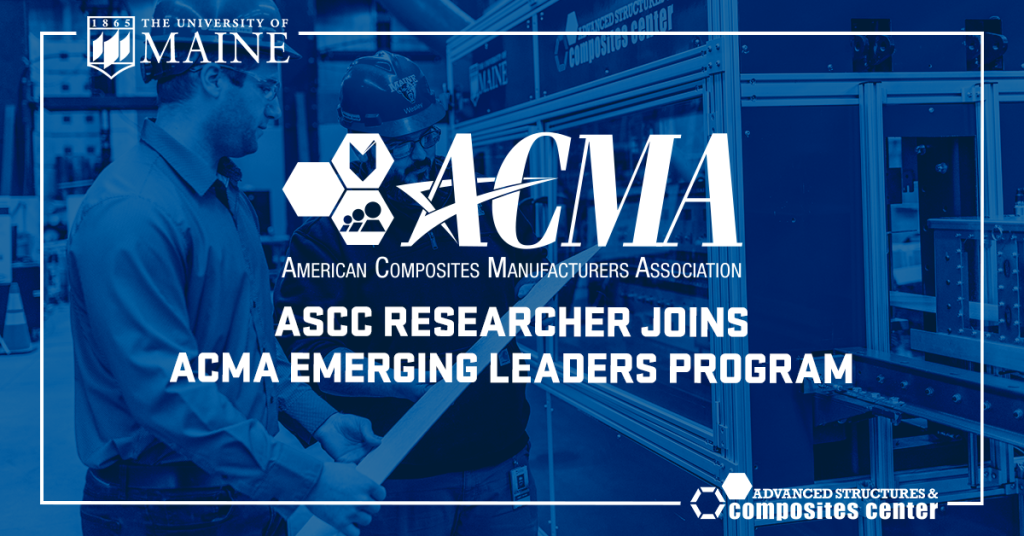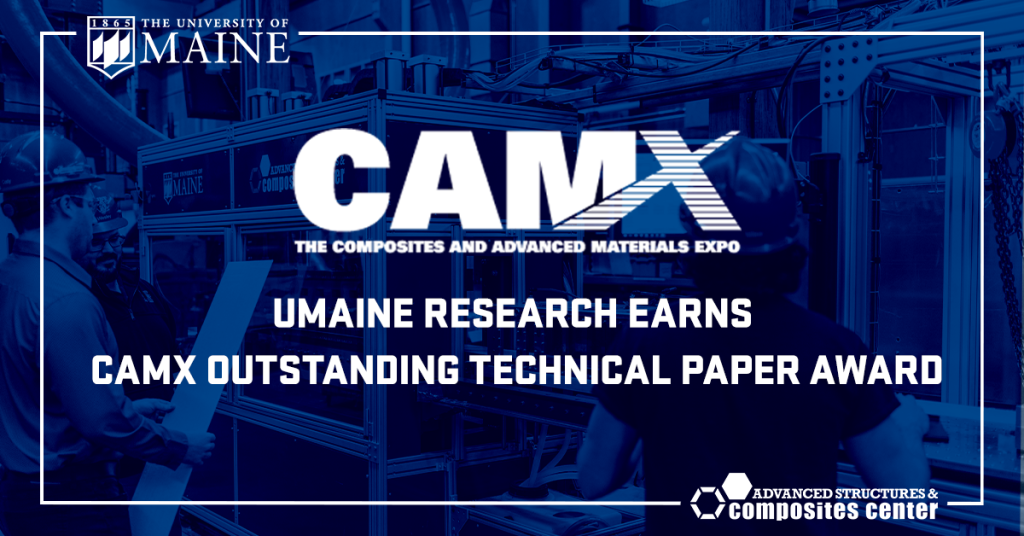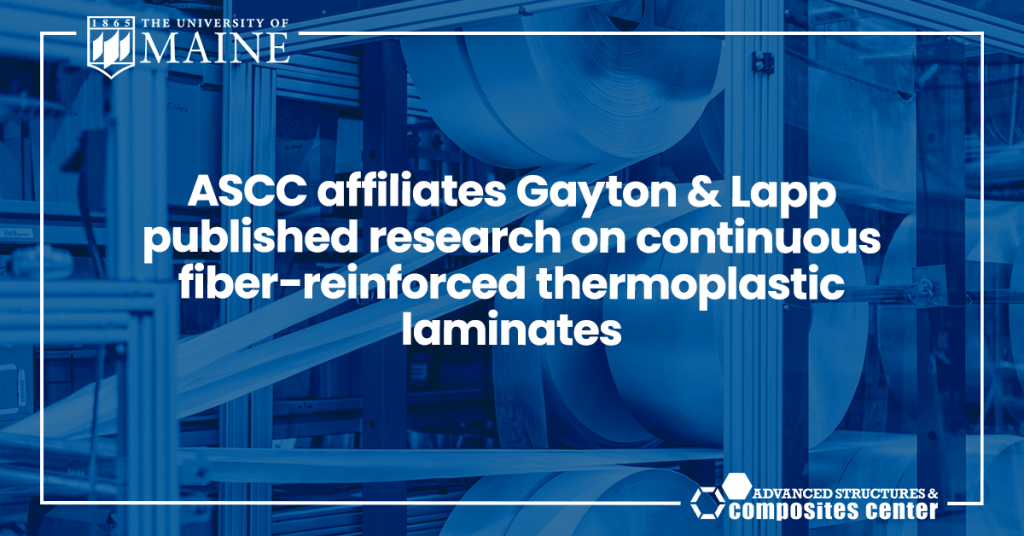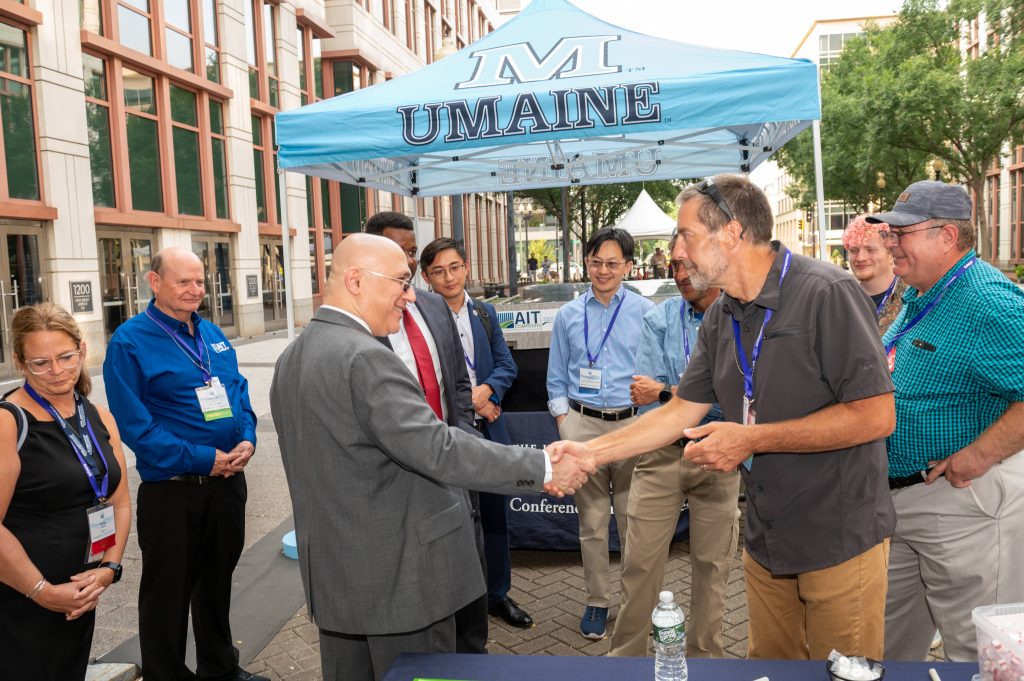CIVIL INFRASTRUCTURE
| At the forefront of testing and manufacturing new, innovative, and sustainable forest products to revitalize and diversify Maine’s forest-based economy.
CIVIL INFRASTRUCTURE
At the forefront of testing and manufacturing new, innovative, and sustainable forest products to revitalize and diversify Maine’s forest-based economy.
CLIMATE SOLUTIONS
CIVIL INFRASTRUCTURE
Research at the Advanced Structures and Composites Center is at the forefront of developing novel, corrosion-resistant, rapidly deployable structures and infrastructure components utilizing next-generation composite materials. The team also works closely with State Departments of Transportation to assess and enhance the longevity of existing infrastructure through bridge field testing, asset monitoring, and the characterization of construction materials. Additionally, researchers develop advanced analysis methods and software for bridge capacity estimation. With partners such as AIT Bridges and the Transportation Infrastructure Durability Center (TIDC), the ASCC is demonstrating these cutting-edge technologies in the field, improving transportation infrastructure in Maine, New England, and beyond.

Research Areas
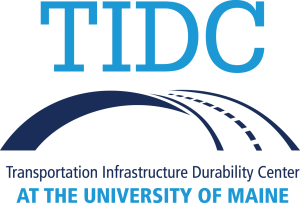
The Transportation Infrastructure Durability Center (TIDC) is the 2018 US DOT Region 1 (New England) University Transportation Center (UTC) located at the University of Maine Advanced Structures and Composites Center. TIDC’s focus is on helping state DOTs extend life and improve the durability of their transportation assets through the development of new technologies, materials, and structures. TIDC has six member Universities within the New England Region.
Moving forward we will continue to pursue projects in partnership with industry and government stakeholders to advance and deploy promising Center-developed technologies that are more sustainable, durable, and long-lasting.
G-Beams
The GBeam is a fiber-reinforced polymer (FRP) tub-girder that is corrosion resistant and designed to last more than 100 years with little to no maintenance. GBeams are ¼ the weight of an equivalent steel girder and are a promising, sustainable, low-cost alternative to steel and concrete that is easy to install. G-Beams are fabricated by AIT Bridges and shipped to destinations nationwide.
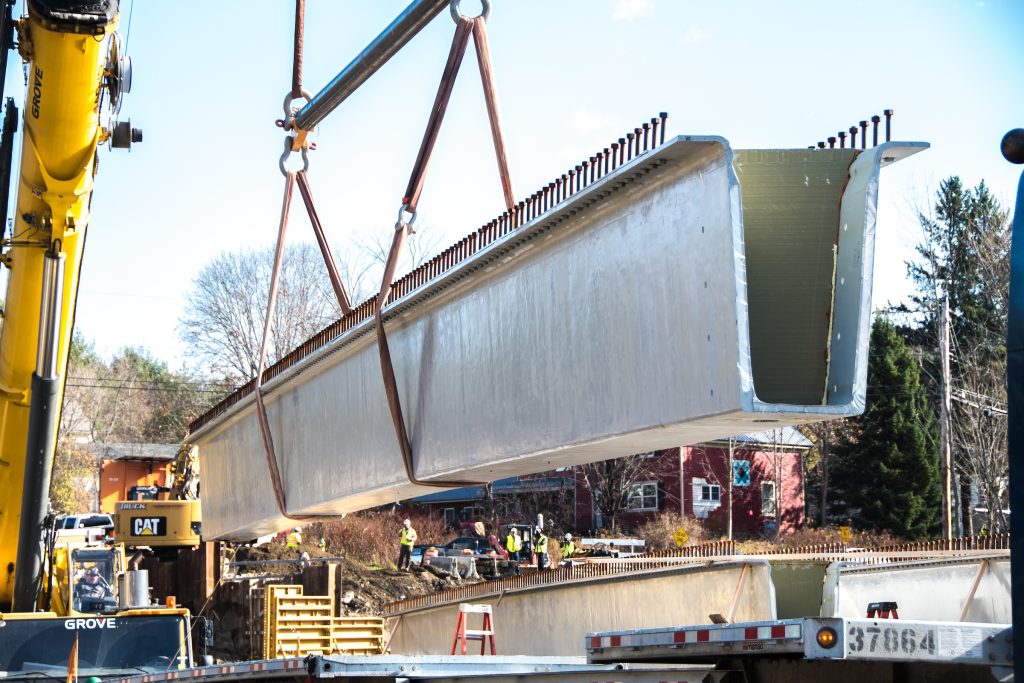

Bridge Assessment
ASCC researchers and students have field-load-tested more than 30 bridges for the MaineDOT to more realistically determine their capacity. While conventional engineering analysis requires limiting truck weights and transportation restrictions, this testing has lifted these weight restrictions for approximately two-thirds of the tested bridges. Finite-element analysis software developed by ASCC researchers that more realistically predicts concrete slab bridge capacity has been adopted for use by the MaineDOT and consulting engineering firms, replacing the need to perform less accurate conventional analyses. A novel, nonlinear finite-element analysis method for assessing older T-beam bridges developed at the ASCC has been used to keep structures open and fully functional. Ultimately, this research has led to a significant reduction in bridge maintenance and repair costs and fewer travel limitations.
GArch: Bridge in a Backpack
The Composite Arch Bridge System, commonly known as Bridge-In-A-Backpack, has been used in 28 bridges in the U.S. and beyond. This technology accelerates bridge construction time, reduces life cycle costs, and has received top industry recognition.
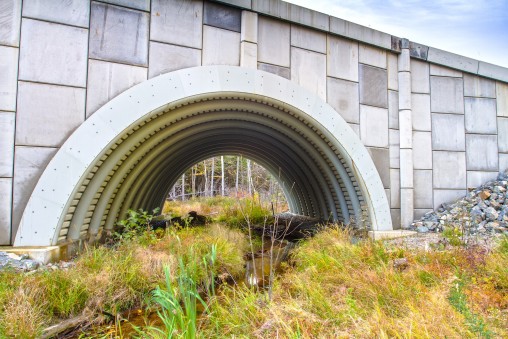
Culvert Diffusers
The Advanced Structures and Composites Center (ASCC) is at the forefront of coastal resiliency research, recognizing the urgent need to address the vulnerability of coastal areas to the impacts of climate change. With rising sea levels and increasing frequency and intensity of storms, coastal regions face significant threats such as erosion, flooding, and habitat loss. ASCC’s work focuses on implementing green infrastructure solutions, utilizing bio-based materials and sustainable manufacturing processes like advanced manufacturing for culvert diffusers, composite sheet piling and novel breakwater solutions.

Rapidly Deployable Breakwater
The Wave Screen Breakwater functions to reduce local wave environments from a up to 1 m wave height, to 0.6m wave height. This adaptable technology was developed to support the sustainability of Maine’s coastlines by creating temporarily deployable breakwaters to support shoreline activities or provide protection before devastating weather events. Originally funded by Army Corps Engineering Research and Design Center to create shelter in open-ocean environments, the Advanced Structures and Composites Center (ASCC) is dual use with this technology in its applications for coastal resiliency.

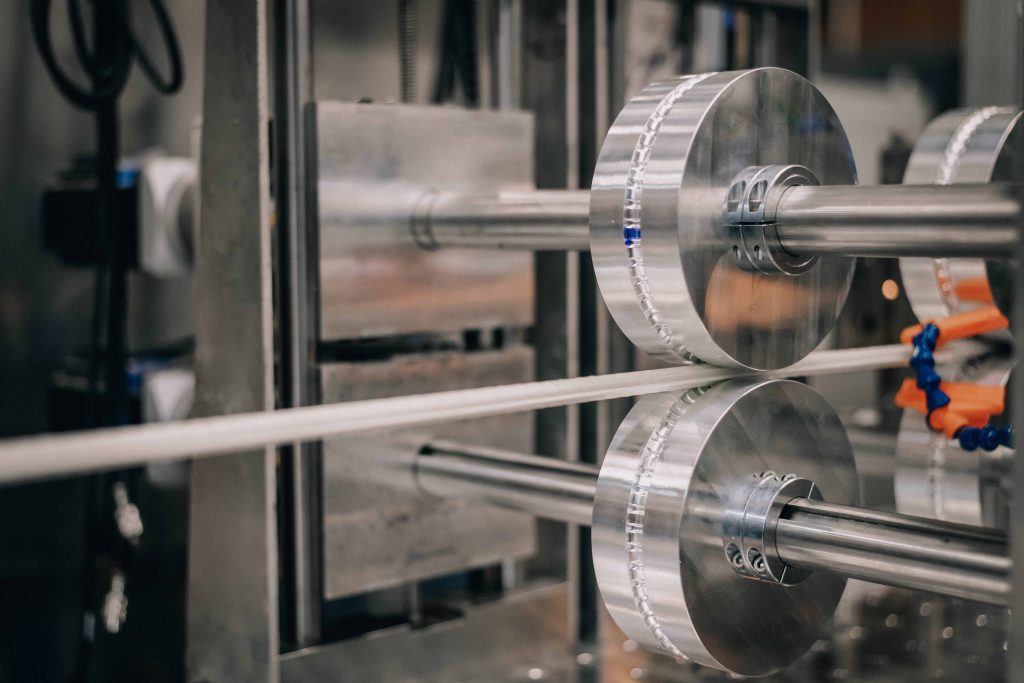
The Continuous Forming Machine (CFM)
The Continuous Forming Machine (CFM) is a University of Maine-developed technology, based on pultrusion and thermoforming, used to manufacture complex thermoplastic Fiber Reinforced Polymer (FRP) parts such as lightweight, field bendable, non-corrosive rebar – The ASCC’s next step in steel free bridge superstructures.
Carbon Fiber Strand Testing
Using tools for measurement like fiber-optic strain sensors and temperature sensors, the ASCC has installed and monitored six carbon fiber composite strands on the Penobscot Narrows Bridge since 2007. These strands are high-strength and non-corrosive composite materials, which inherently last longer than traditionally used steel and result in cost savings. This research is ongoing between MaineDOT, the ASCC, and the Transportation Infrastructure Durability Center.
